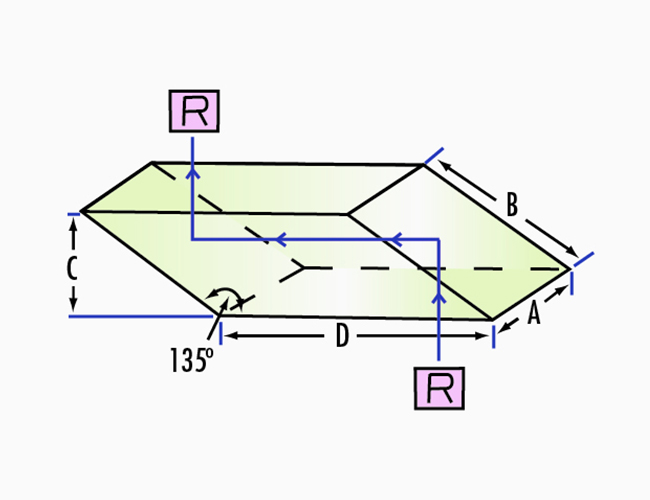ISO9001 Certified Professional Manufacturer & Supplier of Optics
+86-0431-87911611 admin@ytoptics.com
Contact us
-
 Email: admin@ytoptics.com
Email: admin@ytoptics.com
-
 Tel:86-0431-87911611
Tel:86-0431-87911611
-
 Add: 2# Automotive Innovation
Add: 2# Automotive Innovation
Jilin Province, China
Changchun Yutai Optics Co., Ltd.
Home > Products > Prisms > Rhomboid Prisms

UV Fused Silica Rhomboid Prism
The fused silica rhomboid prism is made of fused silica material, featuring ultra-high purity, low thermal expansion, and broad-spectrum transmission characteristics. It is suitable for demanding optical environments ranging from ultraviolet to visible and infrared wavelengths.
Share this:
Geometric structure of a rhomboid prism
Side faces: two parallelogram-shaped inclined surfaces (typically with a 45° tilt angle or custom angles).
End faces: two rectangular entrance/exit surfaces (perpendicular to the optical axis).
Symmetry: no rotational symmetry, but it exhibits mirror symmetry.
Optical properties of a rhomboid prism
Beam displacement: the output beam is parallel to the input but laterally shifted, with displacement determined by the prism height and refractive index.
No image rotation: preserves the original image orientation (unlike penta or dove prisms, which rotate the image).
Reflection mechanism: typically employs two total internal reflections, creating a "Z"-shaped optical path.
Side faces: two parallelogram-shaped inclined surfaces (typically with a 45° tilt angle or custom angles).
End faces: two rectangular entrance/exit surfaces (perpendicular to the optical axis).
Symmetry: no rotational symmetry, but it exhibits mirror symmetry.
Optical properties of a rhomboid prism
Beam displacement: the output beam is parallel to the input but laterally shifted, with displacement determined by the prism height and refractive index.
No image rotation: preserves the original image orientation (unlike penta or dove prisms, which rotate the image).
Reflection mechanism: typically employs two total internal reflections, creating a "Z"-shaped optical path.

TALK TO US 86-0431-87911611
86-0431-87911611
Call us now!
 86-0431-87911611
86-0431-87911611Call us now!
ONLINE CHAT
 2433808388
2433808388

